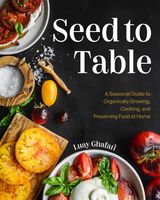Kale and Collard Greens
Brassica oleracea

By Luay Ghafari
Published 2023
Bred for leaf growth, kale (var. sabellica) and collard greens (var. viridis) are cultivars of the same species as cabbage, broccoli, cauliflower, and brussels sprouts. I’m not the biggest fan of kale, and yet it’s always growing and thriving in my garden. I find it architecturally interesting, and it looks beautiful in my urban garden. I use it in smoothies or as a substitute for spinach, in coleslaws, soups, and braises.
Become a Premium Member to access this page
Unlimited, ad-free access to hundreds of the world’s best cookbooks
Over 160,000 recipes with thousands more added every month
Recommended by leading chefs and food writers
Powerful search filters to match your tastes
Create collections and add reviews or private notes to any recipe
Swipe to browse each cookbook from cover-to-cover
Manage your subscription via the My Membership page
Part of
Advertisement
Related Recipes
-
-
-
-
Related Reference
-
-
-
-
Advertisement



